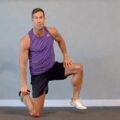Introduction: Nurturing Your Body with Strength and Mobility
Welcome to our compassionate guide on strength and mobility workouts. This journey is not about pushing yourself to extremes, but rather about nurturing your body and mind through mindful movement. By focusing on both strength and mobility, we can create a balanced approach to fitness that promotes overall wellbeing and supports our daily activities with grace and ease.
The Importance of Balancing Strength and Mobility
Strength and mobility are two sides of the same coin when it comes to physical health. While strength allows us to perform tasks with power and stability, mobility enables us to move through a full range of motion with comfort and fluidity. By cultivating both, we create a foundation for lifelong wellness and resilience.
Strength training helps to:
- Build and maintain muscle mass
- Support bone health
- Improve posture and balance
- Boost metabolism and energy levels
Mobility work contributes to:
- Increased flexibility and range of motion
- Reduced risk of injury
- Enhanced recovery from exercise
- Improved circulation and joint health
Gentle Strength Exercises for Every Body
Strength training doesn’t have to mean heavy weights or intimidating gym equipment. Here are some gentle yet effective exercises that can be adapted to various fitness levels:
- Bodyweight squats: Focus on proper form and move at a pace that feels comfortable for you.
- Wall push-ups: A gentler alternative to traditional push-ups that still engages the upper body.
- Glute bridges: Strengthen your core and lower body while lying comfortably on your back.
- Seated rows with resistance bands: Build upper body strength with the scalable resistance of bands.
- Calf raises: Improve lower leg strength and balance, using a chair or wall for support if needed.
Remember, the goal is not to push yourself to exhaustion, but to challenge your body gently and consistently. Listen to your body and adjust the intensity as needed.
Mobility Exercises to Enhance Flexibility and Ease
Mobility work can be a soothing and rejuvenating part of your routine. Here are some exercises to help you move more freely:
- Cat-Cow stretch: A gentle spinal mobility exercise that can help relieve back tension.
- Shoulder rolls: Simple yet effective for releasing upper body tension and improving posture.
- Hip circles: Loosen tight hips and improve lower body mobility.
- Ankle rotations: Often overlooked, ankle mobility is crucial for balance and lower body health.
- Gentle twists: Seated or standing twists can help improve spinal mobility and digestion.
Approach these exercises with a sense of curiosity and kindness towards your body. The goal is to explore your range of motion gently, not to force flexibility.
Creating a Balanced Workout Routine
A well-rounded strength and mobility routine doesn’t require hours of your day. Here’s a simple structure you can adapt to your needs:
- Start with 5-10 minutes of light cardio to warm up your body
- Perform 15-20 minutes of strength exercises, focusing on different body parts each session
- Dedicate 10-15 minutes to mobility work
- Finish with 5-10 minutes of gentle stretching or meditation
Aim for 2-3 sessions per week, allowing for rest days in between. Remember, consistency is more important than intensity. A sustainable routine that you enjoy is the key to long-term success and wellbeing.
Mindfulness and Body Awareness in Your Practice
As you engage in strength and mobility work, cultivate a sense of mindfulness and body awareness. This practice not only enhances the physical benefits of your workout but also promotes mental and emotional wellbeing. Here are some tips to incorporate mindfulness:
- Focus on your breath, using it as an anchor during exercises
- Pay attention to how each movement feels in your body
- Approach your practice with curiosity rather than judgment
- Set intentions for your workout that align with your overall wellness goals
- Express gratitude for what your body can do, rather than focusing on limitations
By bringing awareness to your practice, you create a holistic approach to fitness that nourishes both body and mind.
FAQ: Your Strength and Mobility Questions Answered
Q1: How often should I do strength and mobility exercises?
A1: Aim for 2-3 sessions per week, allowing for rest days in between. Consistency is key, so choose a frequency that feels sustainable for you.
Q2: Do I need special equipment for these workouts?
A2: While some basic equipment like resistance bands can be helpful, many exercises can be done with just your body weight. Start with what you have and add equipment as you feel comfortable.
Q3: Can I do strength and mobility exercises if I have an injury?
A3: It’s important to consult with a healthcare provider or physical therapist before starting any new exercise program, especially if you have an injury. They can provide guidance on safe and appropriate exercises for your condition.
Q4: How long will it take to see results from strength and mobility training?
A4: Everyone’s body responds differently, but with consistent practice, you may start to notice improvements in how you feel within a few weeks. Remember, the goal is overall wellbeing, not just visible changes.
Q5: Can strength and mobility exercises help with stress relief?
A5: Absolutely! Physical activity, especially when combined with mindfulness, can be an excellent way to manage stress. The focus required during exercises can provide a mental break from daily worries, while the physical exertion can help release tension in the body.
Remember, the journey to improved strength and mobility is a personal one. Embrace it with kindness and patience, celebrating each step along the way. Your body is unique and deserving of care and respect. By nurturing it through gentle, mindful movement, you’re investing in your overall wellbeing and quality of life.









